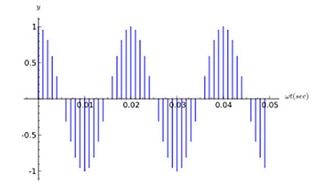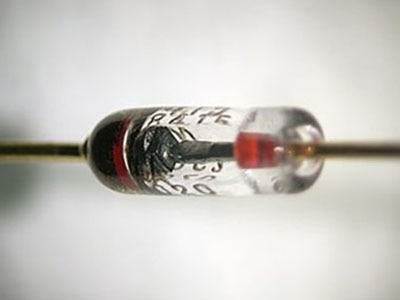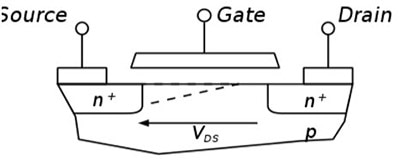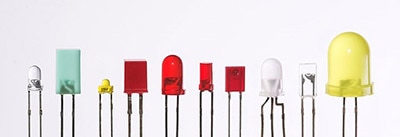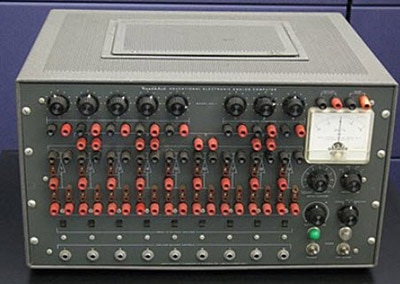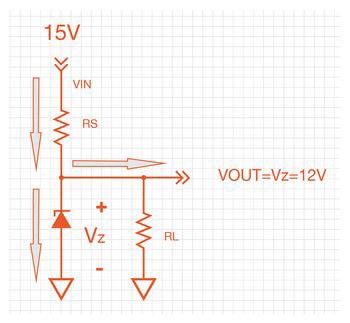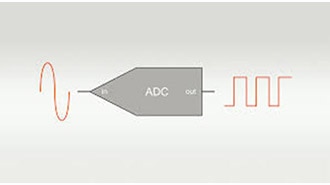How to use a Zener diode to protect ADC/MCU analog inputs
2024-04-05 | By Mario De Lorenzo
Introduction
Zener diodes are an essential component in the world of electronics, with applications ranging from voltage regulation to signal clamping. Whether you're just starting your journey into electronics or you're a seasoned pro, understanding the role and functionality of Zener diodes is crucial. In this blog post, we'll dive into what Zener diodes are, how they work, and their various applications.
What is a Zener Diode?
A Zener diode is a semiconductor device designed to maintain a constant voltage across its terminals, regardless of the current flowing through it. It does this by exploiting a specific electrical phenomenon known as the Zener breakdown or Zener effect.
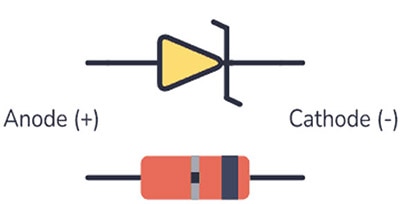
When a Zener diode is reverse-biased (meaning that the voltage applied to the diode is in the opposite direction to its usual forward bias), it remains in an off state until a certain threshold voltage, known as the Zener voltage (Vz), is reached. Beyond this voltage, the Zener diode conducts electricity, allowing current to flow in the reverse direction. This unique characteristic makes Zener diodes particularly useful for voltage regulation applications.
How Does a Zener Diode Work?
Zener diodes are engineered to have a specific voltage rating, and this rating determines the voltage at which they will begin to conduct. The primary components of a Zener diode include:
- Anode: The positive terminal.
- Cathode: The negative terminal.
- Zener Voltage (Vz): The critical voltage level at which the diode starts to conduct.
- Breakdown Region: The reverse-biased state where the diode conducts.
The Zener diode maintains a near-constant voltage across its terminals in the breakdown region. This makes it an excellent choice for applications requiring stable voltage references or voltage clamping.
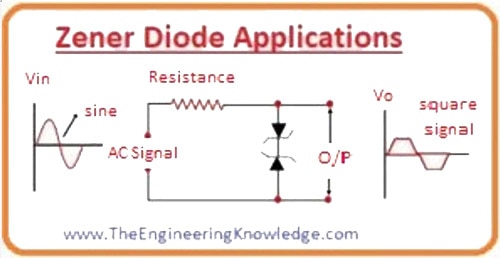
Applications of Zener Diodes
Zener diodes find a wide range of applications, catering to both beginners and experienced electronics enthusiasts:
- Voltage Regulation: One of the most common uses of Zener diodes is in voltage regulation. They can provide a stable output voltage, making them ideal for power supplies, ensuring that connected circuits receive a constant voltage regardless of input variations.
- Voltage Reference: Zener diodes serve as precise voltage references, aiding in circuits that require a known and constant voltage level for accurate measurements and calibration.
- Signal Clamping: Zener diodes can be used to limit the amplitude of AC signals in audio and video circuits, preventing voltage spikes and protecting sensitive components.
- Overvoltage Protection: Zener diodes are incorporated in surge protectors and voltage clamping devices to safeguard sensitive electronics from voltage surges and transients.
- Temperature Compensation: Zener diodes are also used in temperature-compensated voltage dividers to maintain stability in circuits affected by temperature fluctuations.
- LED Current Limiting: They are employed as current limiters in series with LEDs to prevent excessive current and extend the LED's lifespan.
- Noise Suppression: Zener diodes can be used for noise suppression and transient voltage protection in various circuits.
Zener Diode vs. Capacitor: Understanding the Difference
Zener diodes and capacitors are both fundamental electronic components, but they serve vastly different purposes and exhibit distinct characteristics. Here's a breakdown of the key differences between these two components:
1. Function:
- Zener Diode: Zener diodes are primarily used for voltage regulation and maintaining a constant voltage across their terminals. They operate in the breakdown region, allowing current to flow in the reverse-biased direction when a specific voltage (the Zener voltage) is exceeded. Zener diodes are used to stabilize voltage levels in circuits, making them ideal for power supplies and voltage references.
- Capacitor: Capacitors store and release electrical energy in the form of charge. They are used for energy storage, coupling, filtering, and timing applications. Capacitors store electrical energy by accumulating charge on their plates and releasing it when needed. They can filter out high-frequency noise, store energy for quick discharge, and block DC current while allowing AC signals to pass.
2. Energy Storage:
- Zener Diode: Zener diodes do not store energy like capacitors. They do not have the ability to accumulate and release charges. Instead, they continuously conduct in the reverse-biased state to maintain a specific voltage level.
- Capacitor: Capacitors store energy in the form of an electric field between their plates. When voltage is applied, they accumulate charge, and this stored energy can be released as needed. Capacitors can store and release energy over time, making them crucial for various time-dependent applications.
3. Voltage vs. Charge:
- Zener Diode: Zener diodes control voltage. They are all about maintaining a specific voltage level, regardless of the current passing through them. Zener voltage is their defining characteristic.
- Capacitor: Capacitors deal with charge. They store charge when voltage is applied and release it when required. The key parameter for capacitors is capacitance (measured in farads), which determines their ability to store charge.
4. Symbol:
- Zener Diode: The symbol for a Zener diode typically looks like a regular diode but with a Z-shaped mark or arrow within the symbol to indicate its Zener breakdown characteristic.
- Capacitor: The symbol for a capacitor is two parallel lines, representing the plates of the capacitor, with a curved line connecting them, indicating the dielectric material between the plates.
5. Electrical Characteristics:
- Zener Diode: Zener diodes have a specific breakdown voltage (Vz) that they are designed to maintain. The Zener voltage is a critical parameter, and Zener diodes are characterized by their voltage and power ratings.
- Capacitor: Capacitors are characterized by their capacitance value (measured in farads), which determines their ability to store charge. They also have voltage ratings indicating the maximum voltage they can withstand.
In summary, Zener diodes are used for voltage regulation and maintain a constant voltage level, while capacitors are energy storage devices used for a variety of applications, including energy storage, filtering, and timing. Understanding the differences between these components is crucial for designing and working with electronic circuits effectively.
What are ADC/MCU analog inputs?
ADC (Analog-to-Digital Converter) and MCU (Microcontroller Unit) analog inputs are essential components of embedded systems that allow microcontrollers to interface with the analog world. These analog inputs enable microcontrollers to process and interact with real-world signals, which are often continuous and analog in nature, unlike the digital signals processed by the microcontroller's core.
ADC (Analog-to-Digital Converter) Inputs:
An ADC is a critical peripheral in microcontrollers and other digital systems. It converts analog voltage levels into digital values that the microcontroller can understand and process. Here's how it works:
- Input Voltage: The ADC input is typically connected to an external circuit that produces an analog voltage signal. This voltage can represent physical parameters like temperature, light intensity, sound, or any other continuous variable.
- Sampling: The ADC samples the input voltage at regular intervals, dividing it into discrete steps. The precision of the ADC is determined by the number of bits in its output, which defines the resolution and the number of possible digital values it can represent.
- Conversion: The sampled analog voltage is converted into a digital value using a mathematical process known as quantization. This digital value is often referred to as a "count" or "ADC reading."
- Output: The digital value is then available to the microcontroller for processing and can be used for various tasks, such as displaying data, making decisions, or further analysis.
MCU (Microcontroller Unit) Analog Inputs:
Microcontrollers have analog input pins that are used to interface with external analog signals. These pins are usually multipurpose, meaning they can serve as both digital and analog pins. Here's how MCU analog inputs function:
- Analog Input Pins: Microcontrollers typically have a limited number of analog input pins, which are labeled as analog inputs (e.g., A0, A1, etc.). These pins can accept analog voltage levels in a specified voltage range, often 0 to the supply voltage (Vcc) or another range set by the microcontroller.
- Voltage Levels: When an analog signal is applied to an analog input pin, the microcontroller can read the voltage level at that pin. The MCU then converts this voltage level into a digital value using its built-in ADC or analog-to-digital converter.
- Signal Processing: The microcontroller can process the digital value obtained from the analog input in various ways, depending on the application. For example, it can compare the value to a threshold, generate control signals, or send the data to other peripherals or external devices.
Applications:
Both ADC and MCU analog inputs are essential for various applications, including:
- Sensor Interfacing: Reading analog sensor outputs like temperature, light, pressure, and more.
- Data Acquisition: Collecting and processing data from the real world, such as audio signals or environmental data.
- Control Systems: Implementing control algorithms that require feedback from analog sensors to control physical processes.
- Measurement and Monitoring: Monitoring and recording analog data for analysis or display.
Using a Zener Diode to Protect ADC/MCU Analog Inputs:
Why It's Important:
Protecting ADC (Analog-to-Digital Converter) or MCU (Microcontroller Unit) analog inputs is crucial to prevent voltage levels that exceed the allowed range. Excessive voltage can damage or degrade the ADC, the microcontroller, or the entire system. A Zener diode can be employed as a protective device to ensure that the input voltage stays within safe limits.
How to Use a Zener Diode for Protection:
Here's a step-by-step guide on how to use a Zener diode to protect ADC/MCU analog inputs:
1. Choose the Zener Diode:
- Select a Zener diode with a breakdown voltage (Vz) slightly higher than the maximum voltage the ADC or MCU input can handle. The diode's voltage rating should be chosen so that it clamps the voltage to a safe level when the input exceeds the allowed range.
2. Connect the Zener Diode:
- Connect the cathode of the Zener diode to the analog input pin on the MCU or ADC.
- Connect the anode of the Zener diode to ground (GND).
- To limit the current through the Zener diode, place a current-limiting resistor in series with the Zener diode. The value of this resistor can be calculated using Ohm's law:
R_limit = (Vin_max - Vz) / Iz
Where:
- R_limit is the current-limiting resistor value.
- Vin_max is the maximum voltage the input may experience.
- Vz is the Zener voltage.
- Iz is the Zener diode's rated current, which can be found in its datasheet.
4. Add a Bypass Capacitor (Optional):
- To filter out high-frequency noise and provide additional protection, you can place a bypass capacitor (typically an electrolytic or ceramic capacitor) in parallel with the Zener diode. This capacitor helps stabilize the voltage and reduces noise on the analog input.
Difference Between Using a Capacitor:
Using a Zener diode and a capacitor for protection serves different purposes:
- Zener Diode: A Zener diode is primarily used for voltage clamping. When the input voltage exceeds the Zener voltage, the Zener diode conducts and clamps the voltage to its Zener voltage level. This prevents the voltage from rising further, protecting the ADC or MCU from excessive voltage levels. The Zener diode allows for precise clamping and voltage regulation.
- Capacitor: A capacitor is not used for voltage clamping but for noise filtering and signal smoothing. It can help reduce high-frequency noise in the analog input signal, ensuring that the ADC or MCU reads a stable and filtered voltage. However, a capacitor does not protect against voltage spikes or overvoltage conditions in the same way a Zener diode does.
In summary, a Zener diode provides voltage clamping protection by limiting the maximum voltage level, while a capacitor is used for noise filtering and signal conditioning. Depending on your application's requirements, you may use one or both components to ensure that your analog inputs remain within the safe and accurate range of the ADC or MCU.





